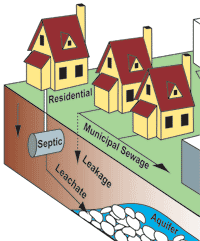Dr. Weeks Comment: Ann explained this travesty to me: the unnecessary fragrances in soaps or other items just goes into the water supply (ground water as well) and wreaks havoc. So as consumers, shop for fragrance free items. Let’s be smart people! … Do we really need 4000 items???
“…Over the last two decades, scientists and regulators have raised concerns over the potential environmental effects and risks of the 4,000 pharmaceuticals and substantial number of personal care products that are used by society…”
The Environment and Pharmaceuticals and Personal Care Products: What Are the Big Questions?
ScienceDaily (May 30, 2012) ”” Researchers at the University of York headed a major international review aimed at enhancing efforts to better understand the impacts of chemicals used in pharmaceuticals or in personal care products, such as cosmetics, soaps, perfumes, deodorants and toothpastes (PPCPs), on the natural environment.
Over the last two decades, scientists and regulators have raised concerns over the potential environmental effects and risks of the 4,000 pharmaceuticals and substantial number of personal care products that are used by society.
Following use, these substances can be released to the sewer system and can end up in rivers, aquifers and soils. Many PPCPs have been detected in the natural environment across the world. Though reported concentrations are generally low, some people are worried that, due to the biological activity of these substances, they could be adversely affecting the health of the environment and may also be getting into drinking water supplies.
The researchers in the University of York’s Environment Department, working with academic, government and industry colleagues in the USA, Canada, Germany, Sweden, Switzerland, S. Korea and Argentina identified key outstanding issues regarding the effects on human and ecological health in order that future resources will be focused on the most important areas. Their findings are published in the latest issue of Environmental Health Perspectives.
They developed a ‘Top 20’ list of questions about issues that need to be addressed to better understand and manage the risks of PPCPs in the environment. An international expert workshop reduced an initial list of 101 potential questions to a final 20 ranked by importance.
The top 20 questions fell into seven categories:
- Identification of PPCPs and situations that research should be focussed on
- Understanding how PPCPs get into the natural environment
- Uptake of PPCPs from the environment into organisms
- Assessment of effects on organisms
- Assessment of risks to people and the environment
- Antibiotic resistance
- Management of risks
Professor Alistair Boxall, of the Environment Department at York, who led the review, said: “A large body of information is now available on PPCPs in the environment. This exercise has prioritised the most critical questions to aid in development of future research programmes and policy development on this important topic The development of the ‘top 20 list’ should mean that researchers, regulators and industry can begin to work more closely together to answer the most pressing questions in a coordinated and timely manner.”

